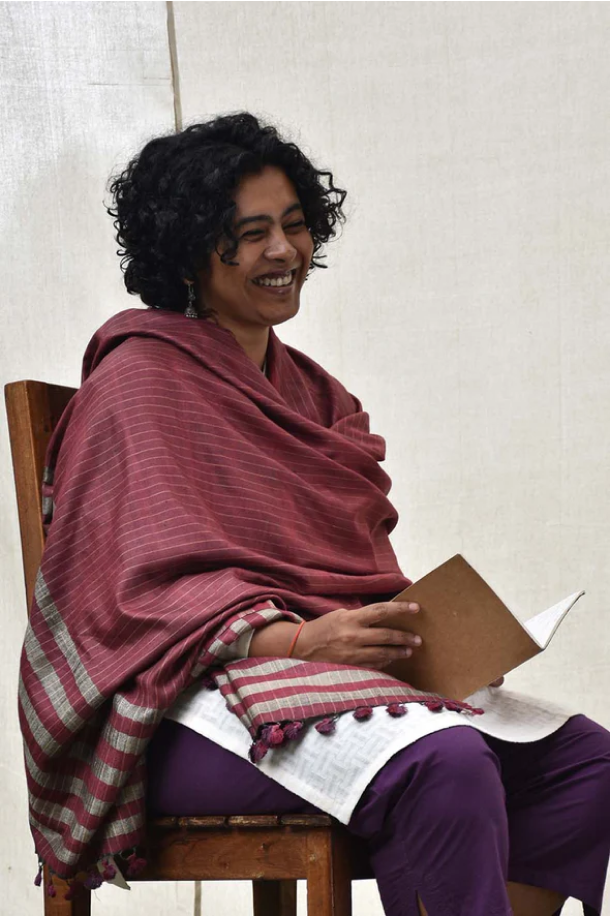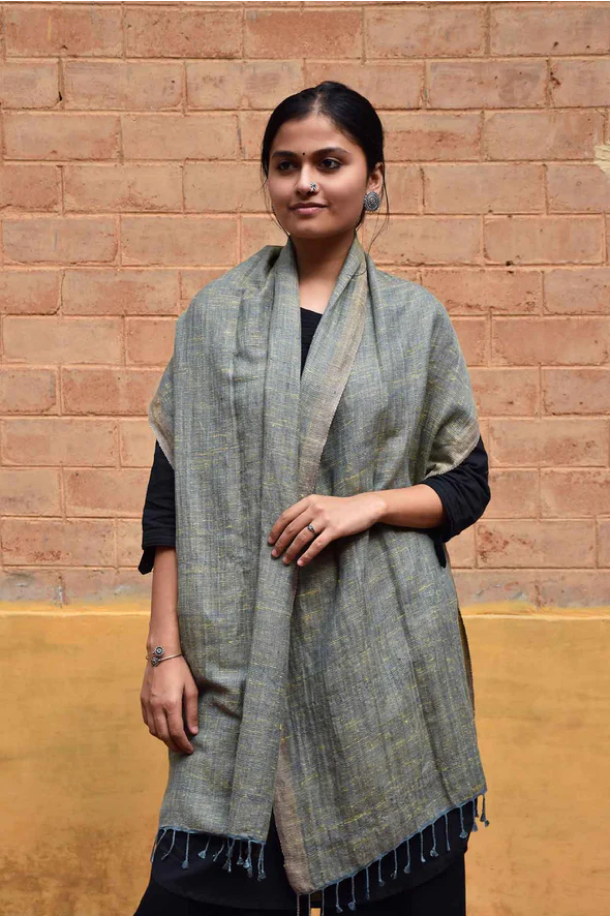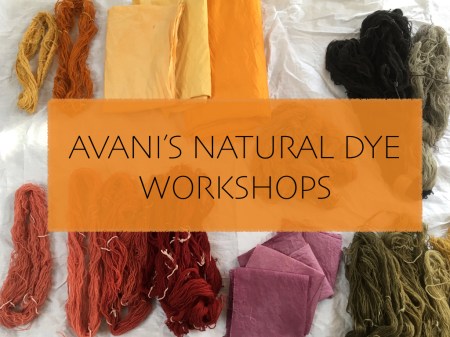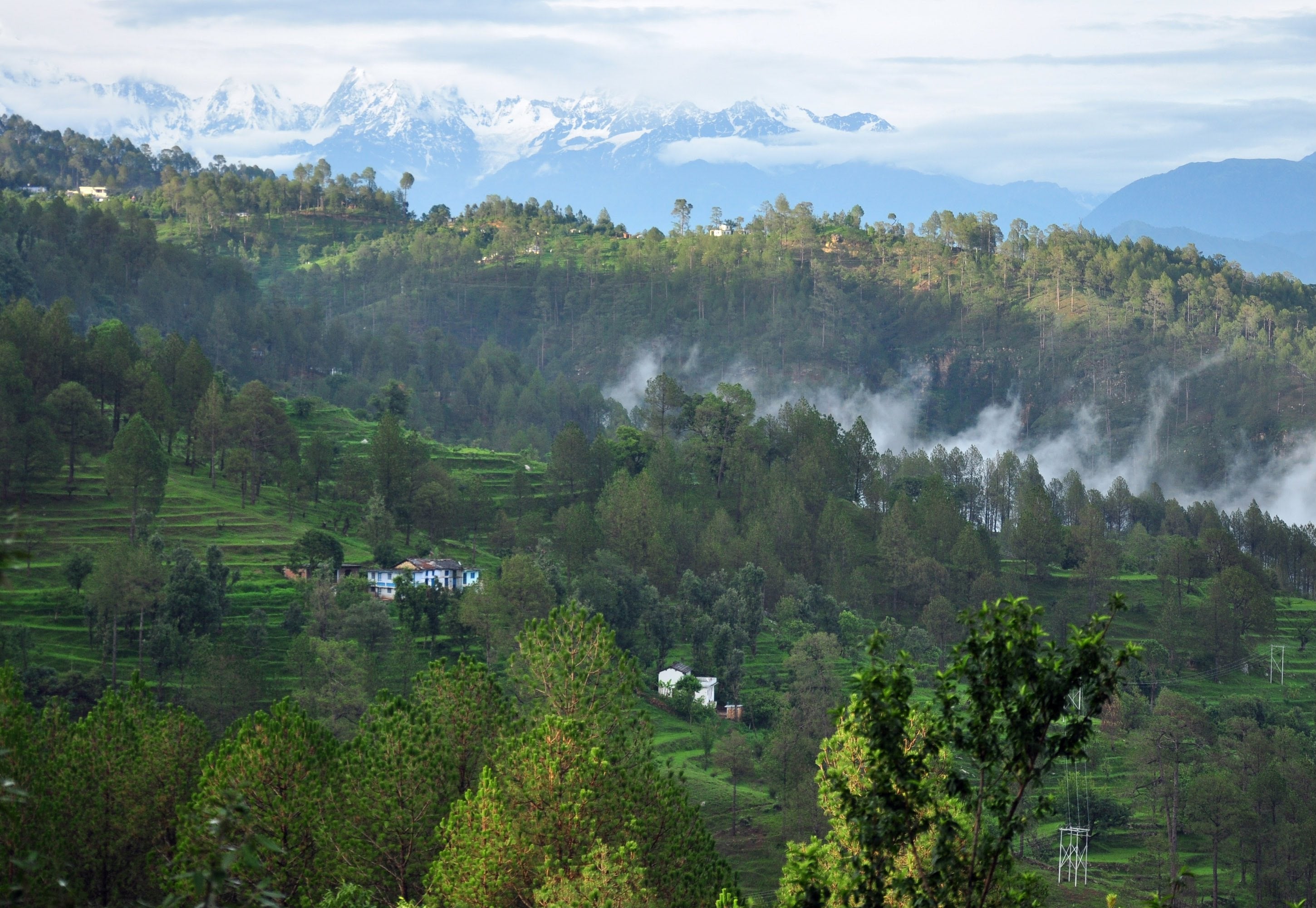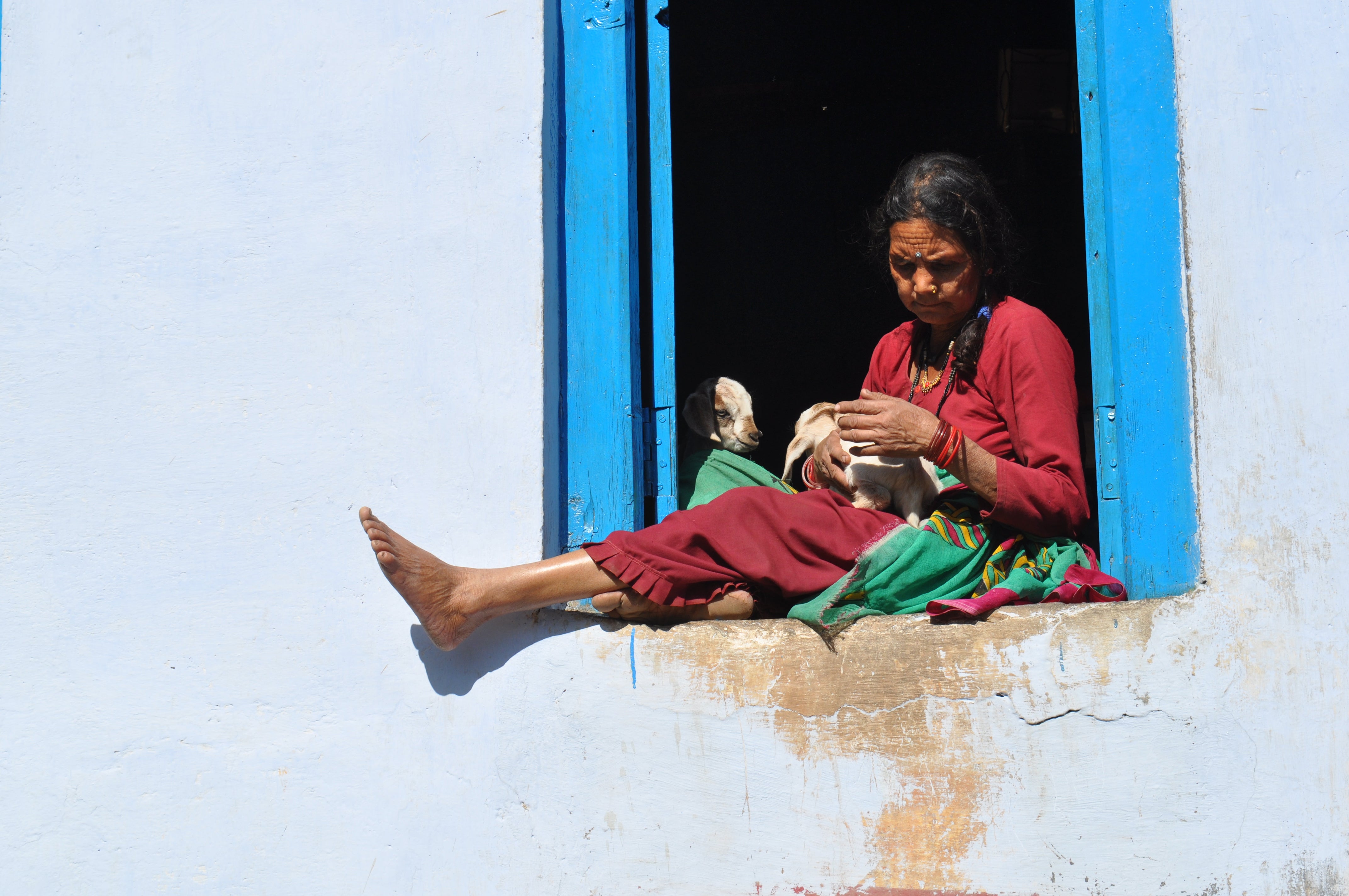
Re-Inventing Traditions
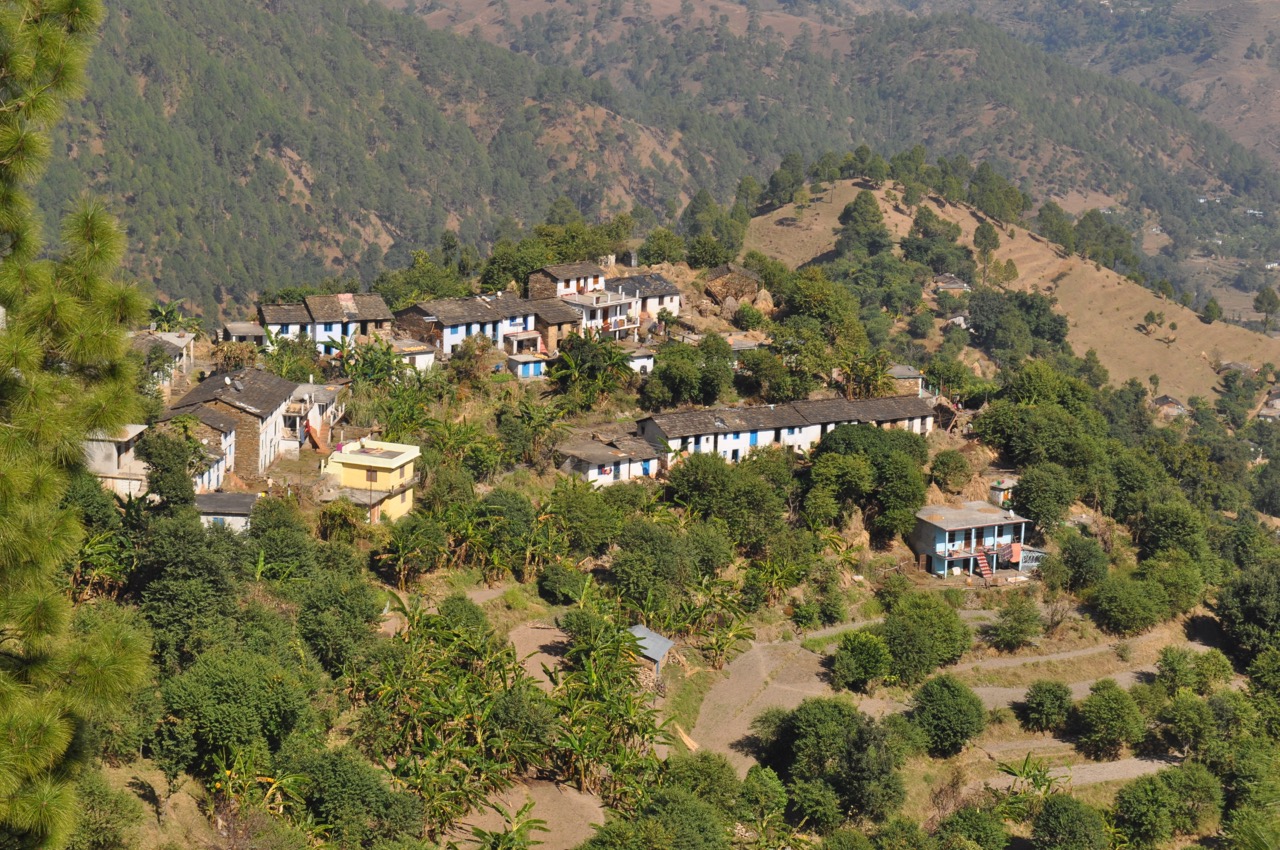 Digoli seen from the forest above it
Digoli seen from the forest above it
Today, we'd like to take you along on a trip our two interns Camille and Emilie took to Digoli, the site of Avani’s first field center. They set off to explore the relationship between the Bora community, one of Avani’s primary beneficiaries, and hemp weaving, an age-old tradition of the Kumaon highlands which is slowly disappearing.
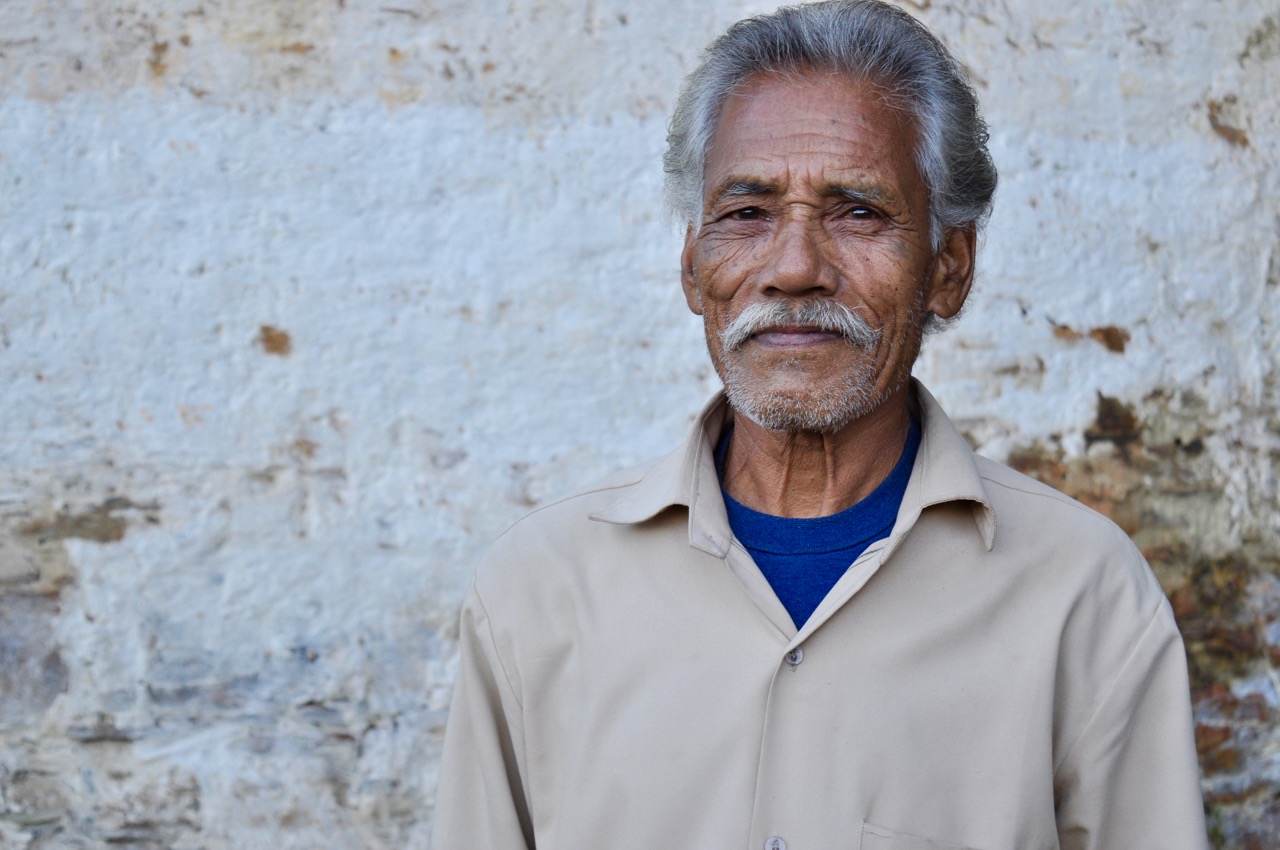 Mr. Anh Singora
Mr. Anh Singora
‘Its an old tale passed down from our elders (…) the whole tribe was created due to this’. Mr. Anh Singhora told us as he began his tale of how Digoli village came to be. Seven or eight generations ago, two brothers from the village of Rawatsera, of the Rawat Caste, were fighting over some land. To resolve the conflict, the brothers made a bet: if one of the brothers managed to make a cucumber drop from its tree with a stone in a slingshot, they would continue to stay together in the same village. If the cucumber didn’t fall, one of them would have to leave the village. Both brothers ended up missing, forcing one into exile in the forest. While there, he fell in love with a woman from the Bora community who lived in a nearby village. The pair’s romance was frowned upon by the woman’s family, so her brother banished her from the family home, forcing both lovers to live in the forest. They were very poor, and needed to find a way to make a livelihood.
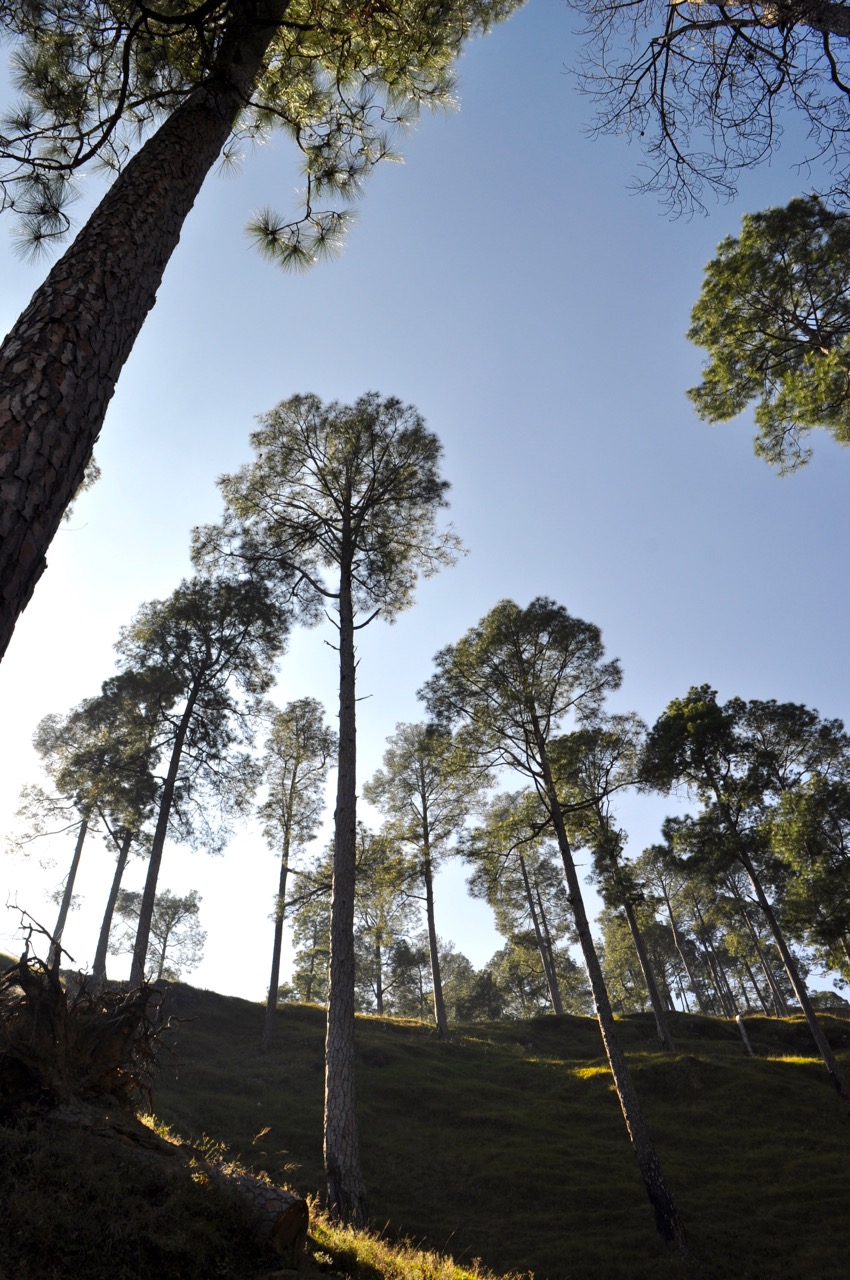 Pine tree forests abound in the Kumaoni hills. This one is right behind the village.
Pine tree forests abound in the Kumaoni hills. This one is right behind the village.
Eventually, the lovers discovered hemp fibers and started using them to make things to sell. After some time, the pair settled down and founded the village of Digoli. The couple had four sons, three of whom created Digoli’s three neighboring villages, whilst the eldest stayed on in Digoli. Their descendants are now understood to be Boras, although only the woman was a Bora.
Digoli is a small village way up a narrow steep trail carved into the Kumaoni hills, two hours away from the road. Its white-washed houses with blue windows and door-stills, narrow paths crowded with cows and goats, its vegetable gardens and terraced fields are reminiscent of any other village in the area. Here too, women balance impressive bundles of grass or wood on their heads, holding themselves impossibly straight, taking small step after small step on the uneven ground to bring fodder and fuel back to their home.

Here too, men have deserted the village in search of jobs to supplement what meagre harvest their fields offer. Here too, old women can be seen lovingly washing their buffalos, or their grand-children in the cold water brought back from the village pump. Here too, foreigners need only to smile to be invited for chai or lunch by shy women under the watchful gaze of fascinated but timid children.
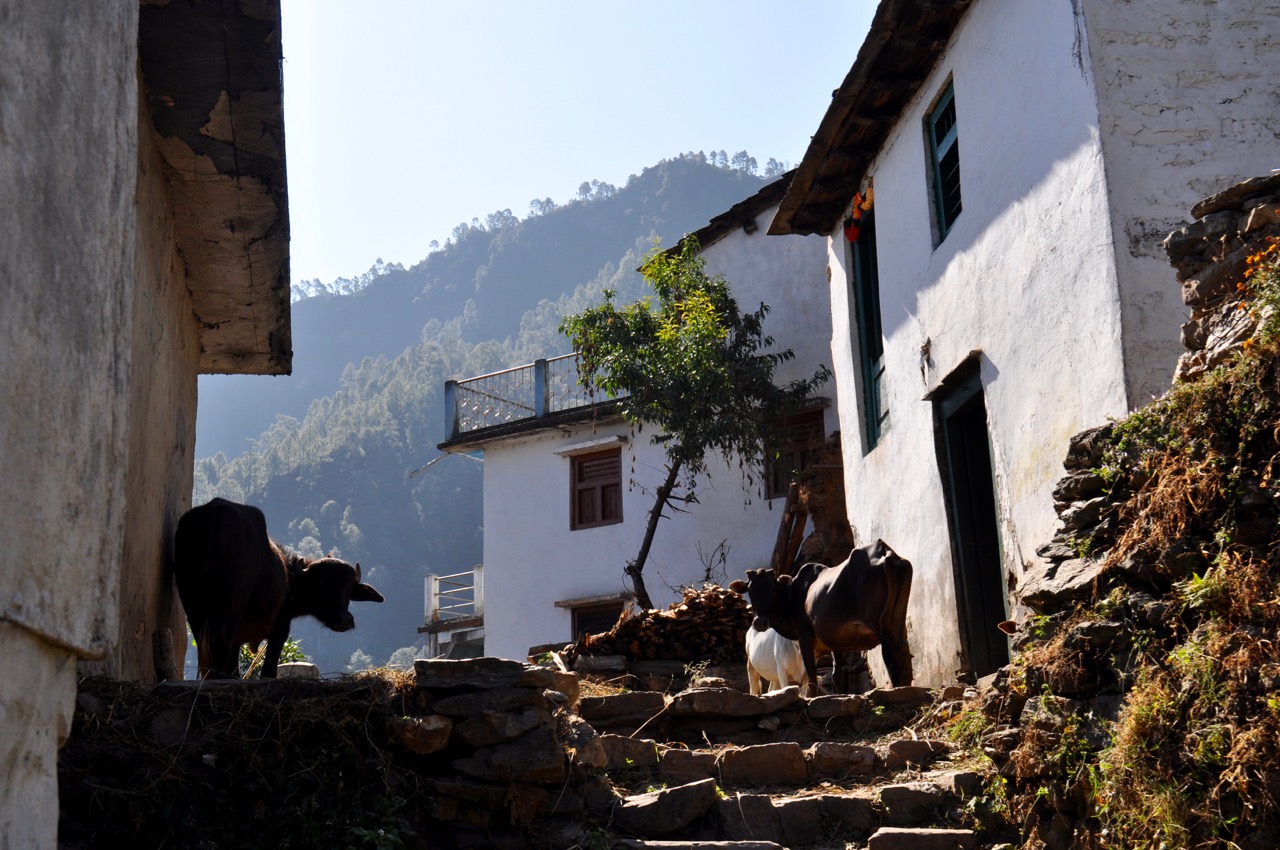 White houses and beaten earth paths
White houses and beaten earth paths
But Digoli, and the adjoining villages, are home to the Bora community, well-known for their hemp-weaving skills. This tradition has dwindled ever since the 1985 government ban in 1985 on hemp cultivation. The Boras are classified by the government as 'Other Backward Caste'. This may give them access to some benefits in applying to government jobs. But life in the village remains at best a challenge. Economic activities are mostly confined to farming the temperamental hill soil and other labour work.
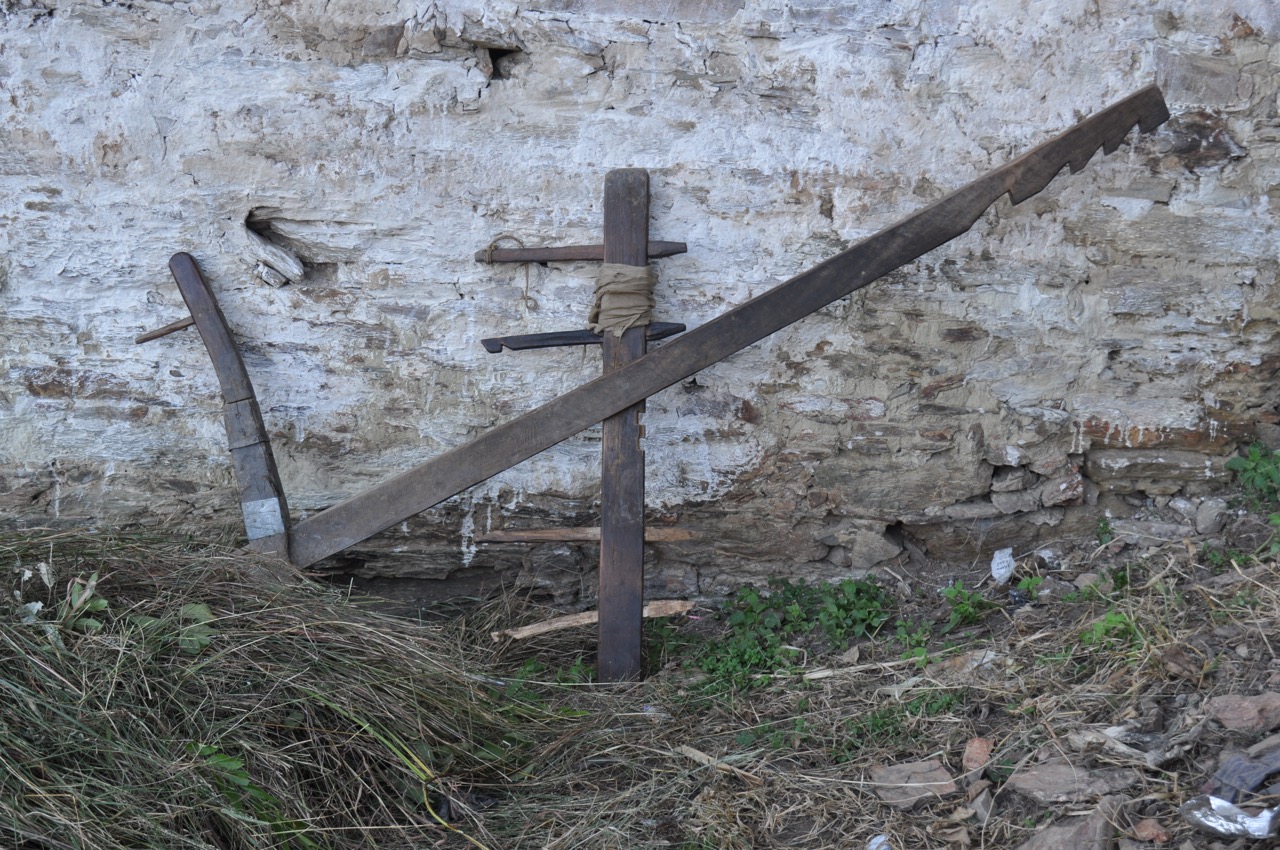 A farmer's plow
A farmer's plow
The villages are not connected to the roads: schools, hospitals and economic hubs are far away. A young women told us of her daily, two-hour long trips up and down the steep slopes her village is nestled upon, followed by an hour and a half of taxi to the nearest high school. She left at seven every morning to arrive in time for her ten o'clock classes.
Mr. Anh Sing is, like many of the village elder, nostalgic for the traditional hemp weaving skills of his community. For him, hemp is part of the Bora community's identity. The very name Bora comes from the hemp bags woven and used for barter at the melas (fairs). Mr. Anh Sing states that 'there are three things: one is the seed for the spice, one is the fiber, the third is the negative for making the drugs. But we are not making drugs, we are focusing only on the creative things. Two creative things are there, only one thing is bad'.
Lilah, a spinner for Avani, expressed how hemp has become a symbol of self-sufficiency for her: if the community use hemp’s seeds as spice, its fibre for bags, mats and ropes, they are less dependent on the outside world economically . Another interviewee, who had been weaving hemp since the age of fifteen, deplores the use of plastic in lieu of hemp products. Plastic, according to her, is less resistant, more expensive and ‘not natural’. Raduli, now wrinkled and creased by sun and hard work, proudly stated that she had sustained herself and put her children through school thanks to her weaving skills.
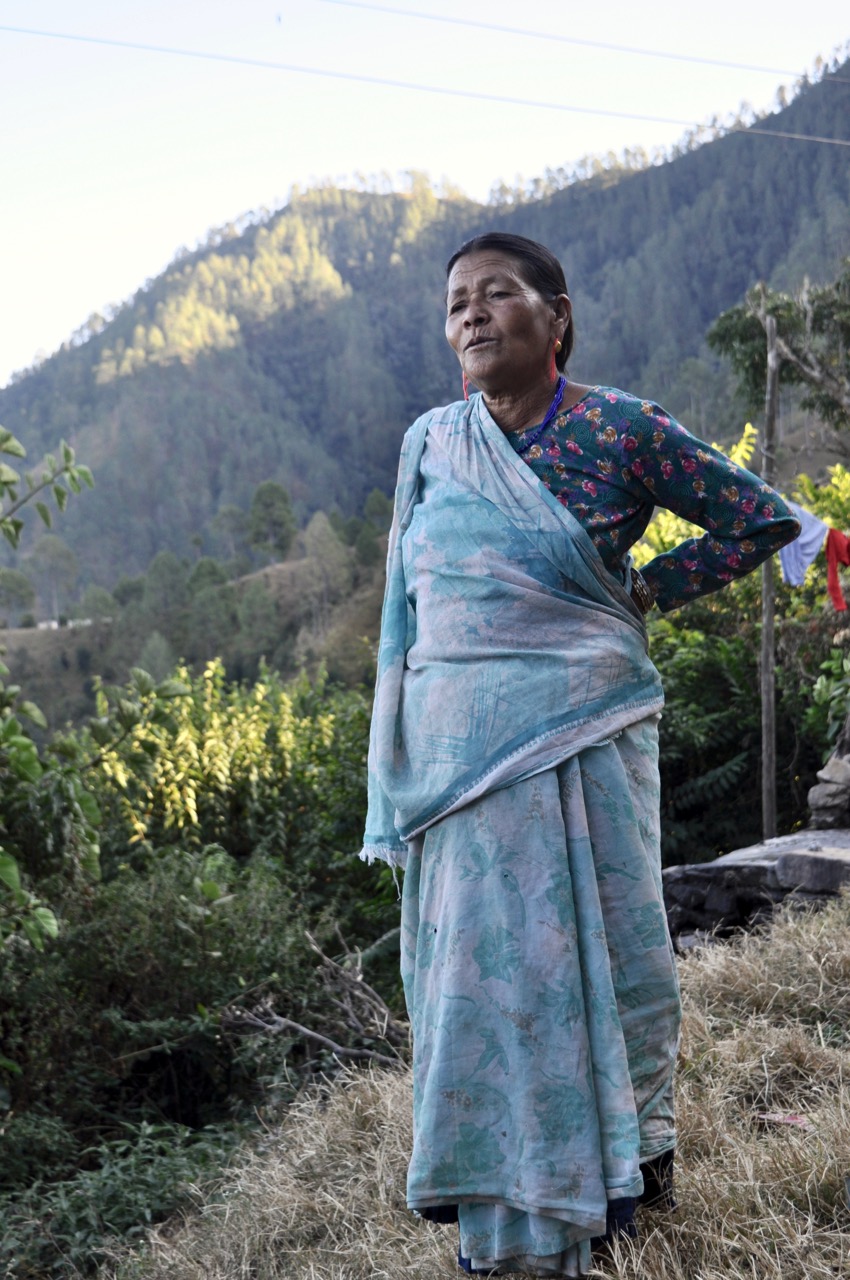
However, nostalgia for hemp weaving is not shared by all community members. In fact, most of the younger generation shrugs off this traditional craft as 'old' and too labour-intensive. Raduli claims her front teeth are missing because she used them throughout her life to tease the hemp fiber out of the stalks. Not only does hemp cultivation demand lots of careful care, but the process of extracting the fibers can span over months, as the stalks need to be left to soak in water of exactly right temperature so the fibrous bark will detach itself from the stalk. Turning bark into weavable fibers is in and of itself an art.
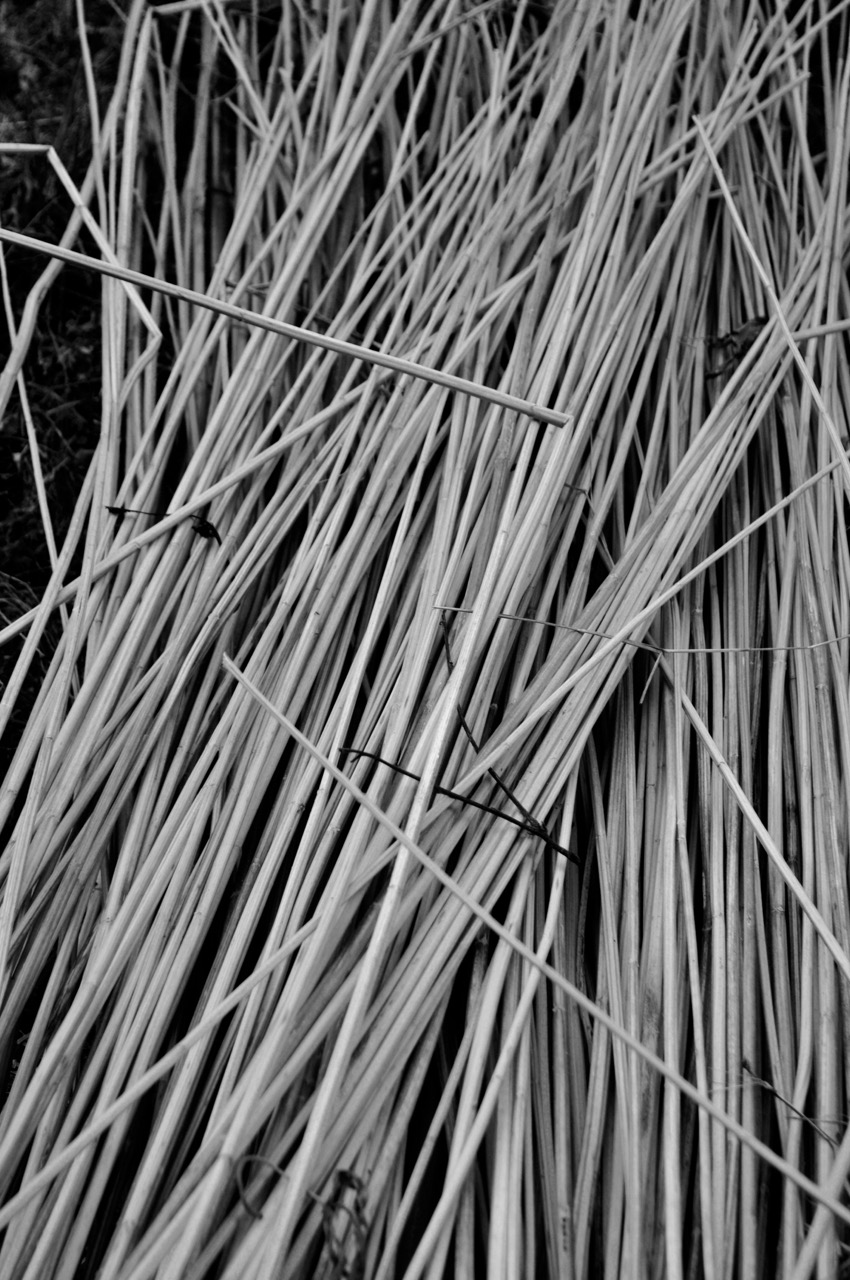
Hemp stalks drying in the fields. They've been grown for their seeds, but they will soon be burned along with their fibre so that officials cannot pin down who grew the hemp.
It seems to us that hemp has indeed earned its Italian nickname, 'quello delle centro operazioni' – substance of the hundred operations. And the younger Bora generation certainly does not seem to regret having to let go of this painful process. Even though the government partially re-legalised hemp cultivation, those young people we talked to assured us they were not interested in picking it up again.

However, not all is lost of the traditional craft in Digoli. Avani's weavers have translated the age-old weaving technics to modern hand-looms and now use wool and silk instead of hemp.
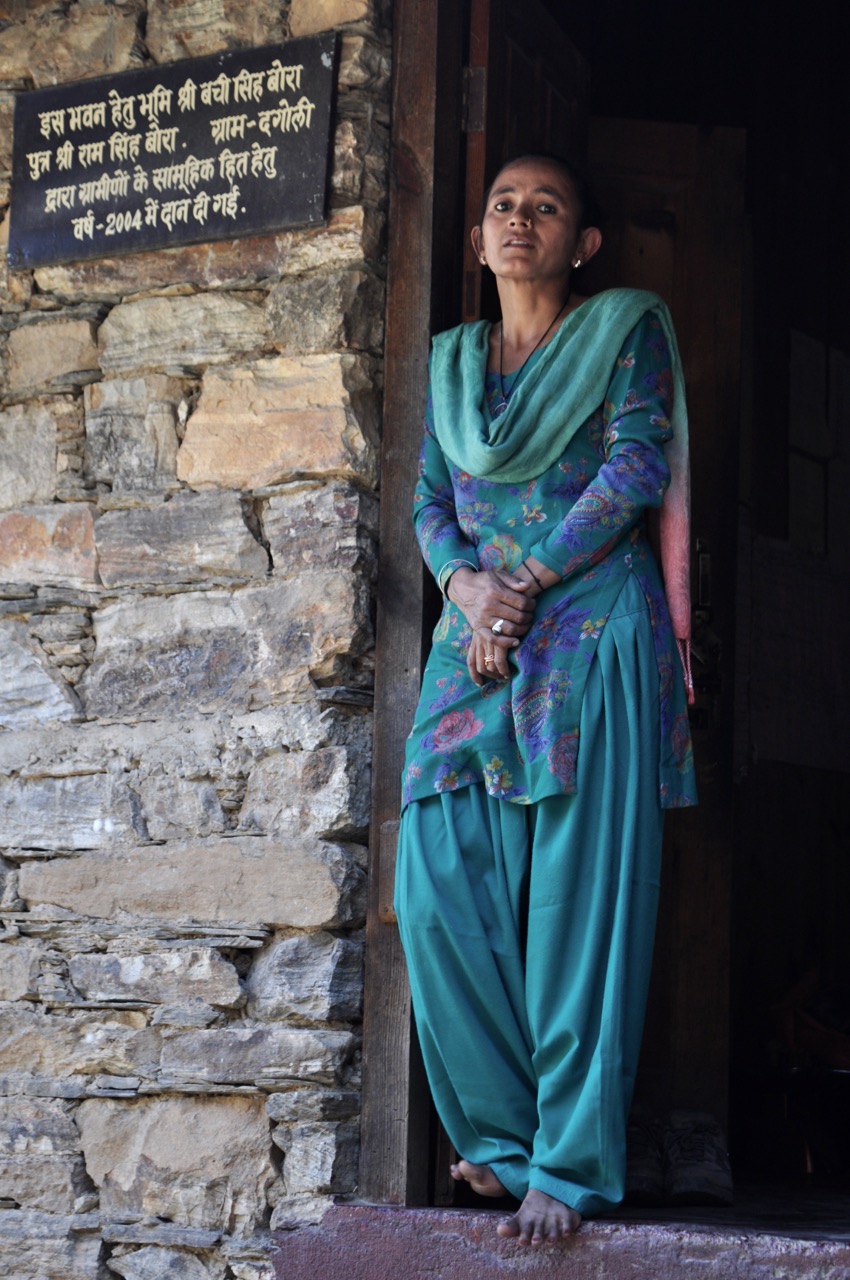 Lalita, the center supervisor
Lalita, the center supervisor
Avani came to Digoli in 2000, on the invitation of a villager who had heard of their work. At the time, their main focus was the introduction solar panels as energy-source. Soon enough, together with the community, they realised the abandonment of hemp-weaving had left a hole in the community's finances, and a new income source was sorely needed. The villagers mentioned their traditional spinning and weaving skills, and together with Avani, decided to transfer these skills to wool and silk. On land gifted by one of the village elders , Avani built a sun-filled, orange-stoned community and weaving centre where women from the four neighboring Bora villages work on beautiful scarves, shawls, saris. They take pride in this skill, knowing that what they create is unique in its use of natural dyes, and hand-looms. There are at the moment ten unmarried girls working at the centre under the supervision of Lolita and Govinda. This honourable livelihood option enables them to put off marriage until they feel ready for this transition. Raju-da, Avani’s textile supervisor, comes from a neighbouring village. According to him, in his youth, women used to marry at fifteen, too young to know their mind and make decisions. Nowadays, Avani’s work and women’s education has meant that girls marry in their mid-twenties, and participate in choosing a spouse.

Though some might deplore the loss of an age-old tradition, we at Avani celebrate the resilience of the villagers whose entrepreneurial and forward-minded spirit have allowed them to create what we hope will become a new tradition recognised throughout the country. Change is part of life, for better and for worst, and we are proud to have been part of those who helped create a beautiful new skill from the foundation of a disappearing tradition.
If you want to learn more about the Bora community and its hemp cultivation traditions, you could check our Google Cultural Institute exhibit when it goes live later this week.
If you are interested in hearing Camille’s thoughts on the preservation of traditional crafts, you can head to Wio news where her think-piece called ‘Is celebrating traditional culture always good?’ got published. You can find it here: https://www.google.com/url?hl=en&q=http://www.wionews.com/india-news/opinion-is-celebrating-traditional-culture-always-good-24798&source=gmail&ust=1511674427789000&usg=AFQjCNFh35cBqCbIZO_Y5v7XcxSPXVvBOw
Photos and text by Emilie Thevenoz for Avani


 Login
Login